Abstract
OBJECTIVE--To examine whether periodic variations in annual infant mortality were associated with malnutrition and the poor quality of the food supply available to the community. DESIGN--Retrospective study of historical epidemiology of infant mortality by time series analysis and family reconstitution of parish registers of burials and baptisms. SETTING--Penrith, Cumbria, England, 1557-1812. SUBJECTS--A total of 17,500 births during 1557-1812. RESULTS--This community in the Eden Valley, Cumbria, close to the Scottish borders, was living under marginal conditions with high mortality and low fertility. Clear oscillations in infant mortality synchronise with the oscillations in the wheat price index which is regarded as a measure of the availability of food to the community, and to pregnant and nursing mothers in particular. Input-output analysis showed that the relationship between the wheat price index (input) and infant mortality (output) was highly significant (p < 0.001). Events during the famine of 1623 have been analysed in detail: high wheat prices during pregnancy caused subsequent severe infant mortality but did not have indirect effects on the subsequent mortality of the surviving children over the age of 1 year. Non-stationary oscillations in neonatal and post neonatal mortality were strongly coherent (p < 0.001) with the wheat price index throughout the period. CONCLUSIONS--Infant mortality is particularly sensitive to famine and also to the quality of the food supply available to pregnant and nursing mothers. The lags between neonatal and post-neonatal mortalities and wheat prices, together with the analysis of the famine of 1623, support the hypothesis that neonatal mortality was related to malnutrition in pregnancy whereas post-neonatal mortality was primarily directly dependent on exogenous causes in the first year of life.
Full text
PDF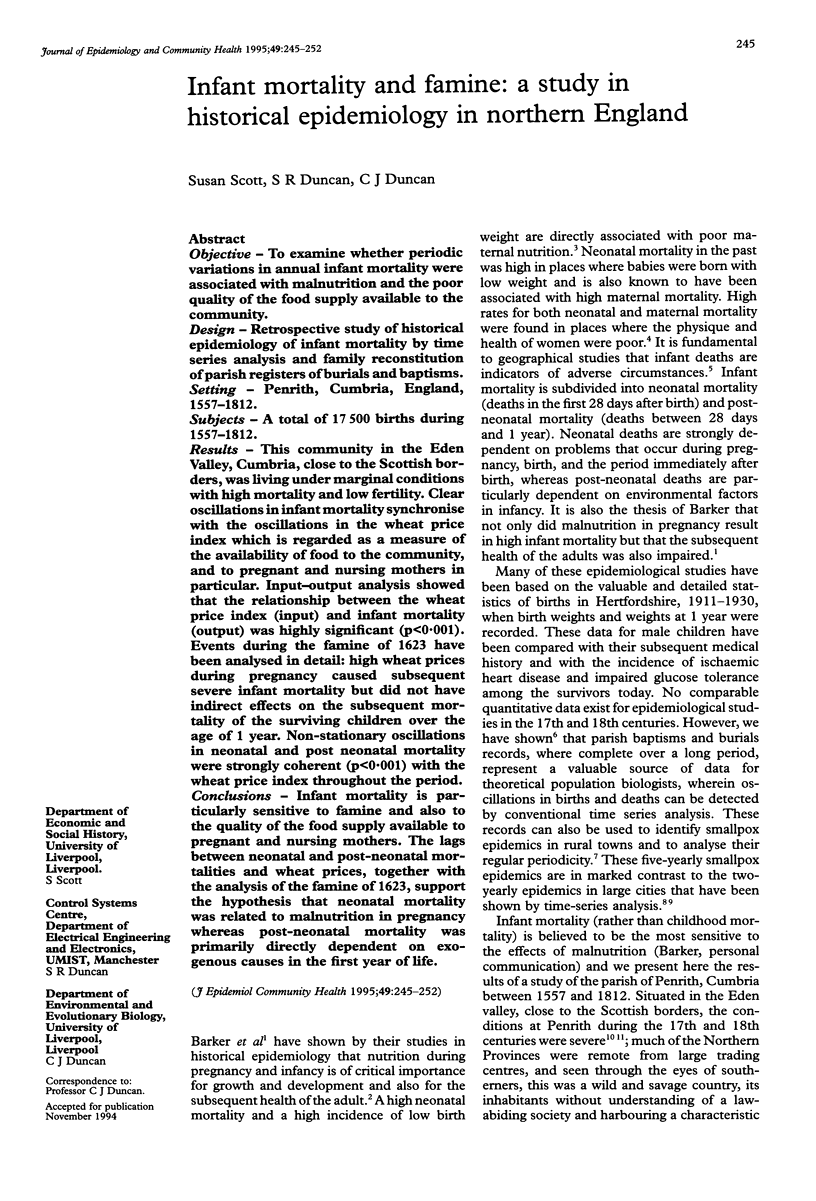
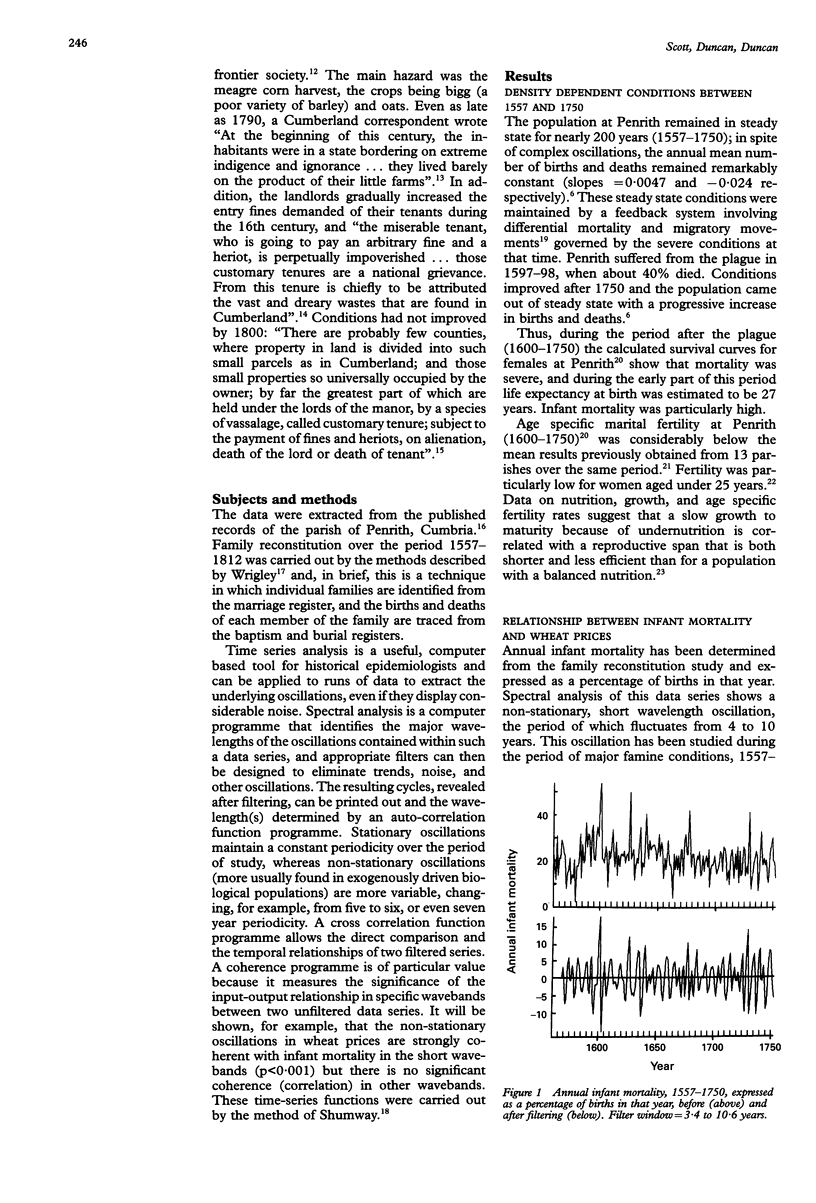
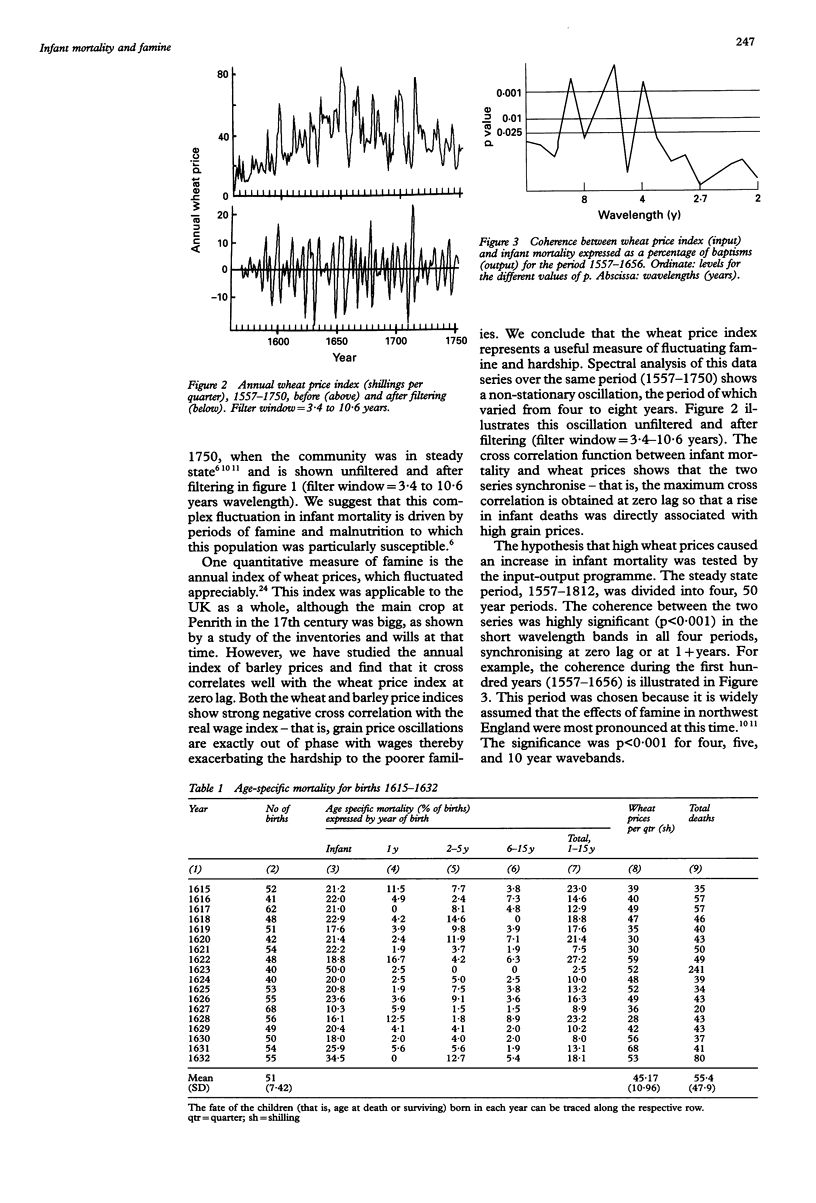
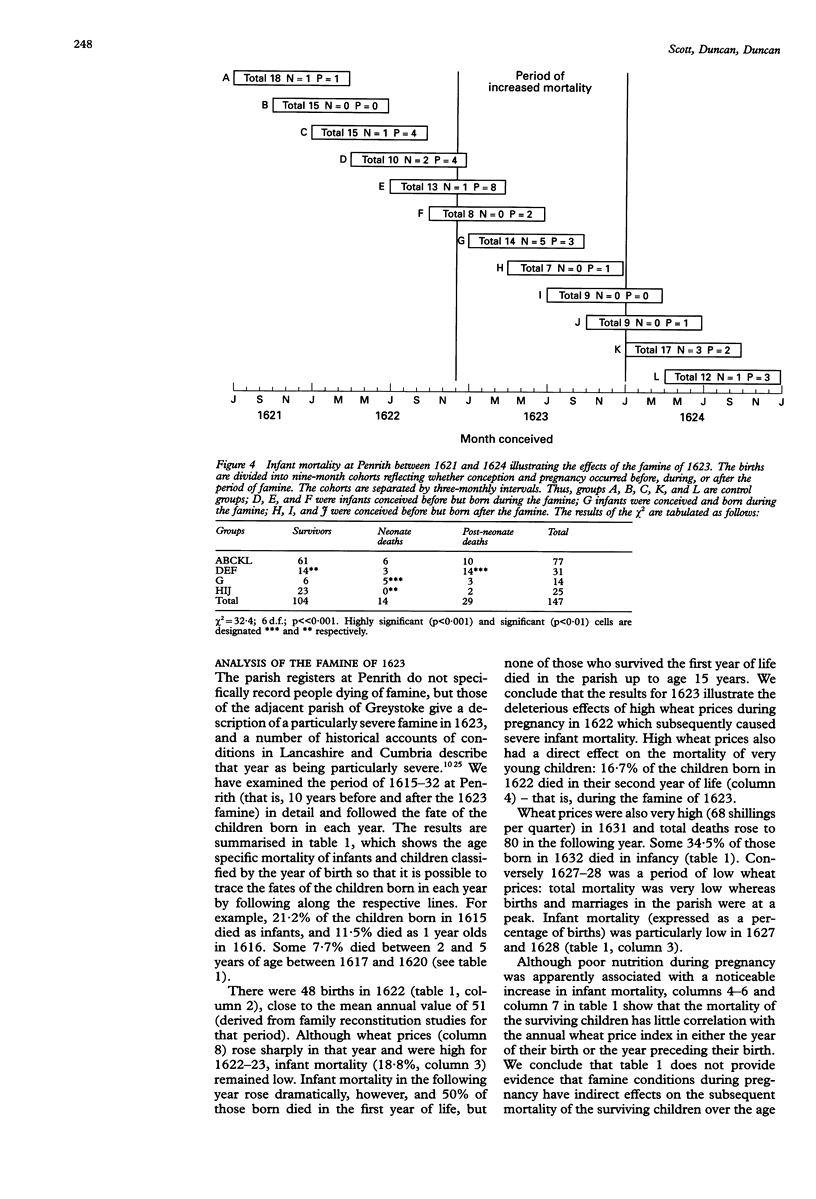
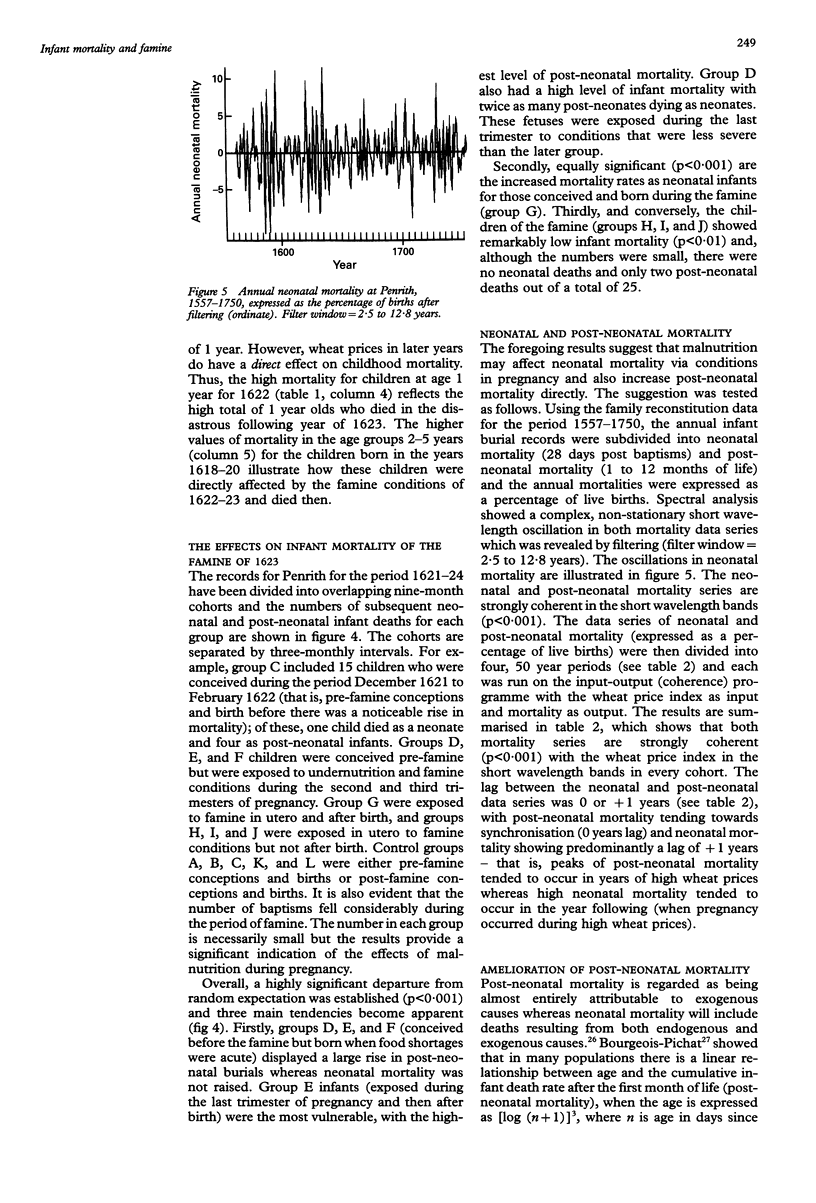
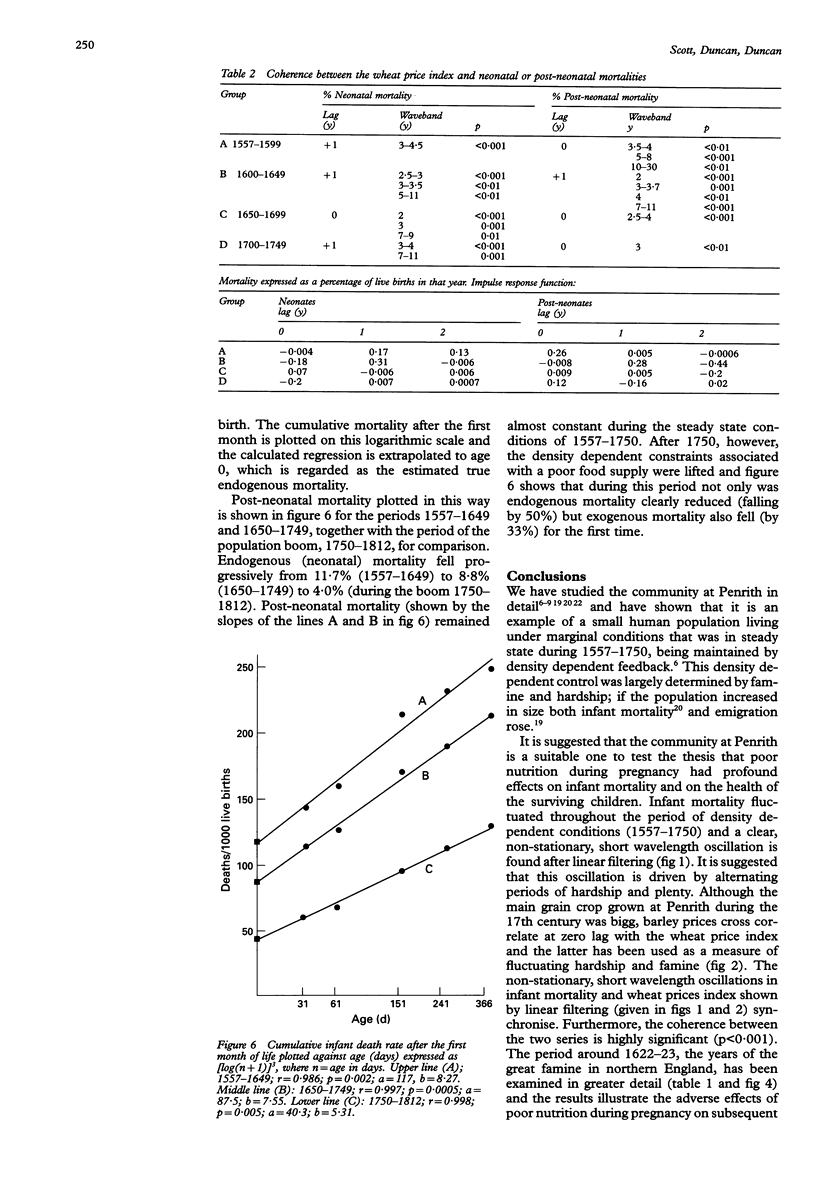
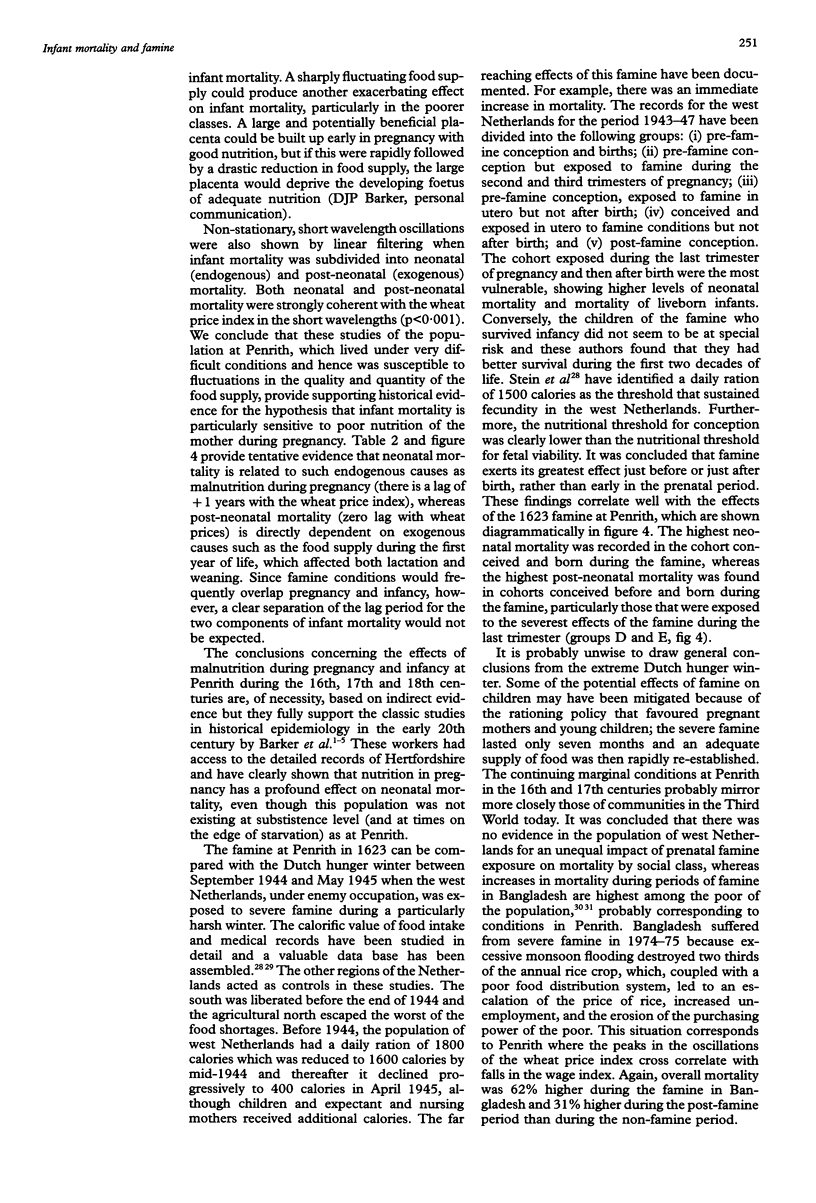
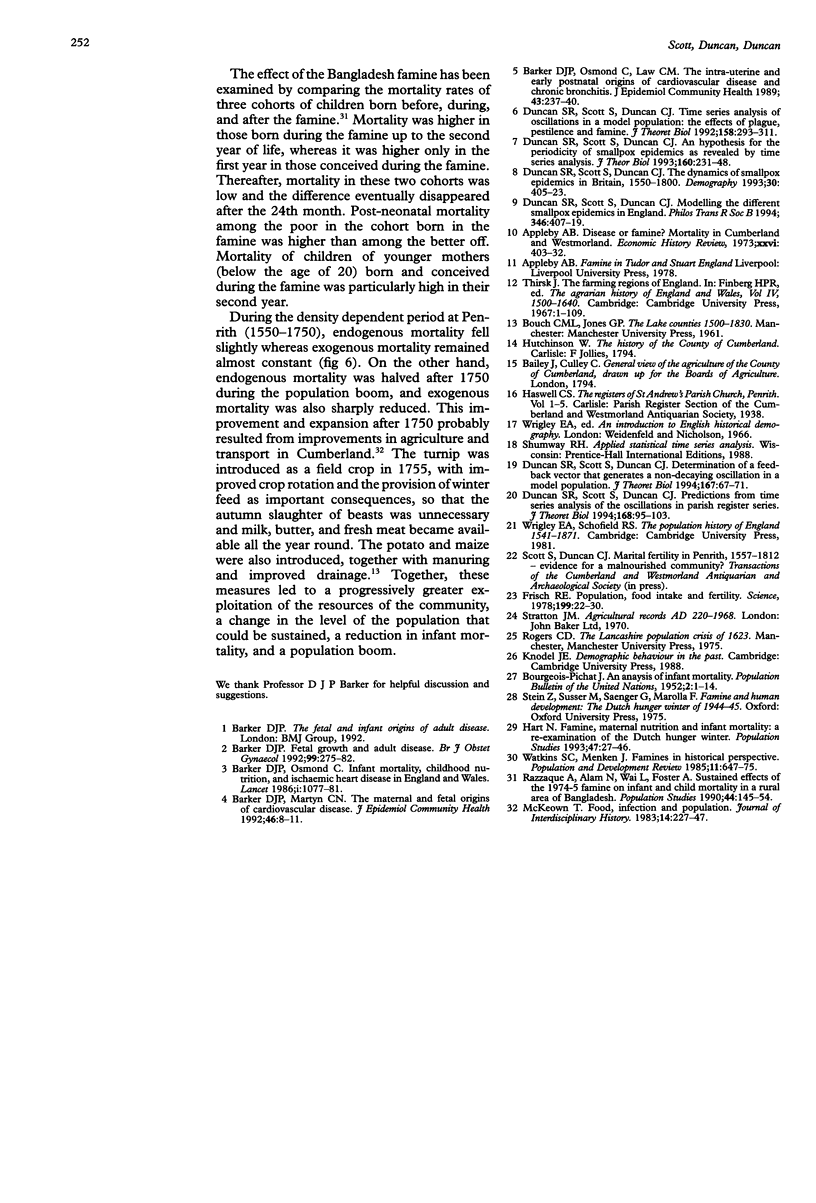
Selected References
These references are in PubMed. This may not be the complete list of references from this article.
- Appleby A. B. Disease or famine? Mortality in Cumberland and Westmorland 1580-1640. Econ Hist Rev. 1973;26:403–432. [PubMed] [Google Scholar]
- Barker D. J. Fetal growth and adult disease. Br J Obstet Gynaecol. 1992 Apr;99(4):275–276. doi: 10.1111/j.1471-0528.1992.tb13719.x. [DOI] [PubMed] [Google Scholar]
- Barker D. J., Osmond C. Infant mortality, childhood nutrition, and ischaemic heart disease in England and Wales. Lancet. 1986 May 10;1(8489):1077–1081. doi: 10.1016/s0140-6736(86)91340-1. [DOI] [PubMed] [Google Scholar]
- Barker D. J., Osmond C., Law C. M. The intrauterine and early postnatal origins of cardiovascular disease and chronic bronchitis. J Epidemiol Community Health. 1989 Sep;43(3):237–240. doi: 10.1136/jech.43.3.237. [DOI] [PMC free article] [PubMed] [Google Scholar]
- Duncan S. R., Scott S., Duncan C. J. An hypothesis for the periodicity of smallpox epidemics as revealed by time series analysis. J Theor Biol. 1993 Jan 21;160(2):231–248. doi: 10.1006/jtbi.1993.1016. [DOI] [PubMed] [Google Scholar]
- Duncan S. R., Scott S., Duncan C. J. Modelling the different smallpox epidemics in England. Philos Trans R Soc Lond B Biol Sci. 1994 Dec 29;346(1318):407–419. doi: 10.1098/rstb.1994.0158. [DOI] [PubMed] [Google Scholar]
- Duncan S. R., Scott S., Duncan C. J. The dynamics of smallpox epidemics in Britain, 1550-1800. Demography. 1993 Aug;30(3):405–423. [PubMed] [Google Scholar]
- Frisch R. E. Population, food intake, and fertility. There is historical evidence for a direct effect of nutrition on reproductive ability. Science. 1978 Jan 6;199(4324):22–30. doi: 10.1126/science.199.4324.22. [DOI] [PubMed] [Google Scholar]
- Hart N. Famine, maternal nutrition and infant mortality: a re-examination of the Dutch hunger winter. Popul Stud (Camb) 1993 Mar;47(1):27–46. doi: 10.1080/0032472031000146716. [DOI] [PubMed] [Google Scholar]
- Razzaque A., Alam N., Wai L., Foster A. Sustained effects of the 1974-75 famine on infant and child mortality in a rural area of Bangladesh. Popul Stud (Camb) 1990 Mar;44(1):145–154. doi: 10.1080/0032472031000144426. [DOI] [PubMed] [Google Scholar]


